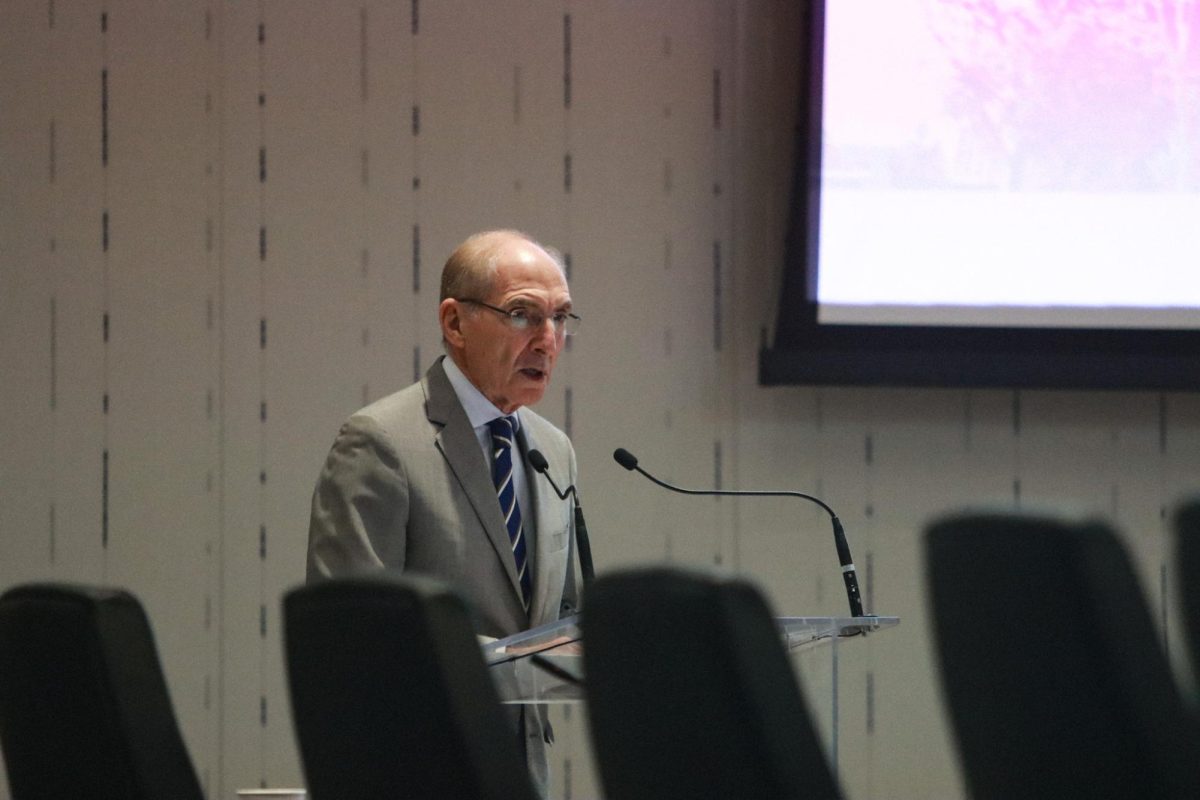Amendment 2 debate shows need for transparency in government
Voters wait in line to cast their ballots on Tuesday, Nov. 3, 2020, at the Tates Creek Public Library in Lexington, Kentucky. Photo by Michael Clubb | Staff file photo.
December 26, 2022
Though election season is now over (for most), I’m sure many of us are left frustrated, confused and unfulfilled by the results. For those who participated in the 2022 midterm elections for Kentucky, there were probably several reasons you decided to go out and vote.
One might be that you were coerced by a parent or an overly enthusiastic, politically-minded friend, or the other might be your own interest in making changes in the community.
And if you’re left-leaning like me, you probably were particularly interested in the heavily discussed “Amendment 2,” which allowed Kentuckians to vote on whether or not they believed the state constitution should block the right to an abortion.
When I learned of this addition to the ballot, I felt immediately hopeful. In August 2022, in light of the newly struck down Roe v. Wade on a national scale, Kansas (a red state) held their own statewide election to determine the fate of abortion rights within its own borders.
The result: a shocking 59% of voters rejected the proposed amendment to their state constitution that would outlaw abortion. If a red state like Kansas could have such an outcome, why couldn’t Kentucky?
As November neared, I was exposed to Instagram posts by friends, family and politicians telling me to “Vote NO on Amendment 2” or “YES on 2.” Knowing my peers’ political affiliations (and through my own investigative tendencies), I quickly discerned the pro-life decision from the pro-choice one.
However, once I got to the polls, I read Amendment 2. And reread it. And read it again. Even though I knew my intentions to vote “no” based on the media I consumed pre-election, I was frustrated by the phrasing of the proposed amendment.
The information was long and wordy, ending with “nothing in this Constitution shall be construed to secure or protect a right to abortion or require the funding of abortion?” as the question to which voters were to respond “yes” or “no.”
Though this issue is one many people are passionate about and likely knew their response without having to read the fine print, it upset me to think about people getting confused or potentially voting for the opposite option than they intended.
To me, it seemed intentional and wrong – voters should have full transparency on the issues over which they have deciding power.
The misleading language isn’t the only troubling thing about the amendment. Though a majority of voters, 52%, voted “no” on Amendment 2, the final decision is ultimately up to the Kentucky Supreme Court.
To many voters, including myself, this was a shock. I had assumed the vote was the only deciding factor, not the state Supreme Court.
Even more frustrating, GOP Solicitor General Matthew Kuhn made the case to the Court that the results of the election should not factor into the Court’s decision being that the state constitution had made no reference to abortion before.
Though the constitution had been silent on the issue, it seems unjust for the election results to essentially be thrown out inconsequentially at the hands of a court that does not reflect the outcomes voters wanted. The Court ultimately chose to keep the existent abortion ban in place while reviewing the case.
Though this whole situation is disappointing, it’s not surprising to me. So many unfair curveballs and miscommunications have taken place in the political arena, and important political issues with serious implications are thrown around as pawns for politicians who never experience the wrath of their decisions and agendas.
I’m not optimistic things will get better in the near future, but it’s important to stay strong, informed and keep voting when possible. Even though it may seem hopeless, using our voices is the only thing we can do to make changes.



























































































































































